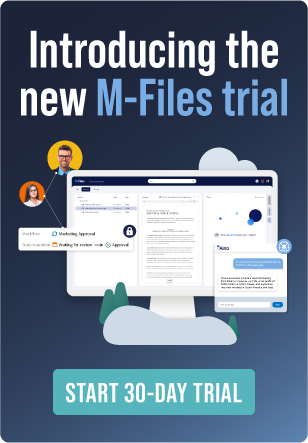What is a Content Services Platform (CSP)? Understanding the Shift from ECM

Last year, the ubiquitous research firm Gartner rebranded their Enterprise Content Management (ECM) Magic Quadrant, now using a new term to describe this group of business solutions — Content Services Platforms (CSP).
This rebranding represented a continuation of the idea that they first posited in their 2016 report Reinventing ECM: Introducing Content Services Platforms and Applications. As a seven-year resident on the Gartner Magic Quadrant for ECM, we were keenly interested in what changed and what the shift means for organizations still pursuing objectives related to the old ECM terminology. In this article, we’ll share with you a quick primer on what CSP means in the current context and the impact on user-organizations.
Content Services Platforms (CSP) vs. Enterprise Content Management (ECM)
The two terms are more than just a new spoonful of acronym alphabet soup. According to Gartner, they represent two distinct ideas. This from their Reinventing ECM research:
“Content services are a set of services and microservices, embodied either as an integrated product suite or as separate applications that share common APIs and repositories, to exploit diverse content types and to serve multiple constituencies and numerous use cases across an organization.”
Gartner further delineates three categories of content services: platforms, applications, and components — all interoperable pieces to a holistic content management strategy.
But what’s the difference between Enterprise Content Management and a Content Service Platform (CSP)?
Reading through the lines, we think what Gartner intends to represent with the terminology change is to describe this set of platforms more comprehensively. In other words, Enterprise Content Management always had the mission of achieving a wide array of content-related operational goals using a centralized platform; Content Services Platforms, on the other hand, embody a new approach — one focused less on storing documents centrally and more on the strategy an enterprise uses to deal with their growing content, data, and document needs.
CSP is about service-oriented processes over content-oriented processes. It’s about agile and flexible services that solve real business challenges. Gartner expounds on these two approaches:
“The transformation from ECM to content services denotes an important conceptual shift away from the ‘management’ of content and too much focus on the repository as the solution. Redefining the market as content services recognizes that it is no longer strictly about the storage of content for the enterprise, but rather about the consideration of how content is used by individuals and teams — internally and externally — to create, collaborate, share, transform, and leverage that content in business processes and to gain insight. This transformation will be a multiyear evolution in many organizations, and reflects a change in requirements from buyers, affecting several markets.”
Ultimately, ECM and Content Services Platforms have similar goals, but a different approach. While ECM intends to achieve operational goals with a single system, CSPs employ a strong recipe of strategy and integrated technology to achieve these goals.
Solve Common SharePoint Challenges with M-Files
Based on the rebranding from ECM to CSP in the 2017 Gartner Magic Quadrant and the corresponding changes to the inclusion criteria, several vendors were added to the quadrant, with a few vendors dropping from the list last year. All the same, M-Files remained on the newly-adorned 2017 CSP quadrant as a visionary in the space and it makes sense.
The Benefits of M-Files with SharePoint
As we discussed, M-Files as a company has always prided itself on having that forward-thinking, strategic approach to solving complex enterprise content problems. So, our company fits perfectly with the terminology change because, for us, it’s never really been about JUST the repository as a solution to manage files. It’s been about developing a solution that evolves and scales with the ever-changing needs of the enterprise.
When the market demanded a more cloud-centric solution, we were ahead of the curve, offering content management on-premise, in the cloud, or a hybrid of the two. When organizations demanded a solution to bridge together multiple data repositories, we were ahead of the curve, offering integrations with a myriad of silos where data might live — from CRM to ERP to Microsoft SharePoint and beyond.
Intelligent Information Management Within SharePoint
M-Files was named a visionary for the second year in a row in the 2017 Content Services Platform (CSP) Gartner Magic Quadrant, cited for a few key strengths:
- How simple it is to install, configure, and manage
- How well-thought-out the M-Files strategy is for managing customers’ fast-growing number of content repositories
- How highly-rated M-Files is for usability across all of their interfaces — web, desktop, or mobile
Enhanced Collaboration & Streamlined Workflows
And it’s almost time for the 2018 CSP Gartner Magic Quadrant, where we look to continue our run as an authority and market visionary in our space. Gartner once again recognized M-Files as a visionary and to help understand the changing CSP landscape.
Ready to unlock the power of M-Files within SharePoint? Schedule a free demo or start your free trial today!





